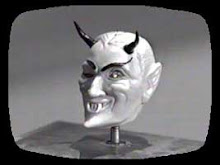That's the testimony the witness gave after being shown a clean copy of the check, months later at deposition, the same witness is shown a copy of the check with her handwriting after which she recants her testimony.She had no knowledge that an unrelated third party named Michael Martinez had provided the cashier's check for $123,530.56 as earnest money. If she had been made aware of Michael Martinez' role in the transaction and that he had provided the cashier's check for $123,530.56 as earnest money, she would have not completed the closing and would have notified the lender. She was never made aware that the cashier's check for $123,530.56 used as earnest money was not obtained until February 21, 2008, 2 days after the closing.
The question that begs to be asked then is why did the Prosecutor Kostrzewski and lead Detective Jorge Baluja show the witness this copy of the check knowing that the testimony wouldn't be reliable? Perhaps the state didn't have a copy of the check with the witnesses handwriting? Maybe it was buried in the case file like the Carey-Shuler letter in the Spence-Jones case? Or maybe they had the check with the handwriting all along and chose not to use it? That would be pretty shitty now wouldn't it?
Enough with the games, let's take a look at what Detective Jorge Baluja tells us during one of his depositions regarding said check...
No kidding? The good detective tells us during this deposition that months before the arrests were made he couldn't find a copy of the check in his file (more like he didn't feel like going through the file) and he asked the attorney he arrested to fax him over a copy of the check as it appeared in her file, in essence he's admitting that he's had a copy of the check with his star witnesses handwriting on it for months before he made the arrests in the Barrera mortgage fraud case. If that's the case then why the hell did the state use the clean copy of the check to influence their witnesses testimony? Wasn't it bad enough that the state scared the shit out of the witness before she gave her statement, now to add insult to injury they show her evidence that they KNOW IS DEFECTIVE!
The question that remains is why.



Is this legal? If they manipulated the evidence in this fashion don't they have some degree of liability?
ReplyDeleteDon't know Larry, we'll find out soon enough.
ReplyDeleteBack up a minute. When he says "Did you ask her to fax over a copy" the her is who, Estafano? And the copy that was faxed over had the prosecution witness notes on it? And the fax machine damaged the notes or the prosecution got a copy from the issuing bank that had no notes on it?
ReplyDeleteJohn, correct the detective asked the attorney whose office closed the transaction to fax over the copy of the check that had witness notes on it. At that point about four months before the arrests were made the state had in their possession two copies of said check, one with the witnesses handwriting on it that came from the attorneys closing file and one from the bank that issued the check that had no handwriting on it at all. For reasons that I can't understand the state chose to use the clean copy of the check for the purposes of their interrogation.
ReplyDelete